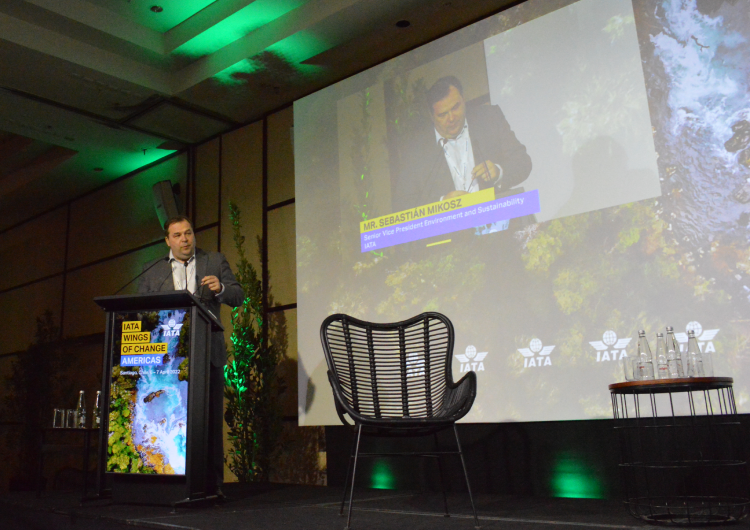by Sebastian Mikosz, IATA SVP Environment and Sustainability
A few weeks ago, I was in Santiago de Chile for the latest edition of Wings of Change Americas, under the theme of “Building a Sustainable Future Together”. More than 300 people took part, representing all members of the Latin American civil aviation. After more than two years of online meetings, we were happy to meet in person. The energy was palpable, and the event successful, even with the topic of war in Ukraine never too far away.
This positive energy translated into discussions about our industry’s growth in the region, with a renewed focus on environment and sustainability – our existential challenge. For this very reason, almost all topics of this year’s Wings of Change focused on sustainability: a conscious decision, for the first time in this event’s history, which reflects how critical this topic is to the entire industry.
Many conversations centered around one common denominator: how to balance environmental protection with the need to achieve a significant level of development for Latin American aviation?
The answer is far from being easy. Firstly, from a geographical perspective, the continent is vast! 19,2 million km2, a population of 650 million and 21 countries. It represents 8.5% of the world’s population and 13% of the world’s livable surface. Before Covid-19 178 airlines operated in Latin America and the Caribbean, flying 356 million passengers with a huge intra-continent traffic. Air travel in Latin America and the Caribbean is expected to continue to grow at about 3.2% per year over the next two decades. Given the size of the continent and the need for connectivity, are there alternative means of transportation available to people in the area?
To answer this question, let’s look at Colombia and Chile. Cartagena and Medellin are both major cities in Colombia. One is 500km away from the capital – Bogota – and the other is 350km away. To drive there, you’d need respectively 10h and 6h, and no train connections are available. By plane, it takes 1 hour or 40 min, and there are many daily connections available. This shows that the alternatives to flying are quite limited and very time consuming. Chile is geographically rather narrow (often less than 100km wide), but the coastline is 6,400km long! It’s 40% more than the distance between the East and West coast of the US (4,654km). Translated to Europe, it’s the equivalent of the distance between Lisbon and Moscow (which used to take 5h30 on a plane). When speaking with the newly appointed Chilean Minister of Environment, Ms. Maisa Rojas Corradi, she highlighted the challenges this distance represents for the country.
Those impressive distance figures lead to one conclusion: there is no alternative to the growth of aviation in Latin America, however this growth needs to sustainable! Bearing this in mind, some of our members already announced impressive decisions. During Wings of Change, the CEO of LATAM, Roberto Alvo, announced LATAM’s commitment to use a minimum of 5% of sustainable aviation fuel (SAF) by 2030, favorizing regionally produced SAF.
This welcomed commitment brought more attention to the SAF supply side in Latin America. At IATA we see this supply challenge as a fantastic opportunity for the continent to become one of the largest SAF producing region in the world. That was our message especially to the Chilean government: seize this opportunity, build an incentive program for producers, raise awareness and investors will follow. Chile has some of the cleanest energy sources available, which could be the beginning of a Power to Liquid SAF strategy.
Chile is not the only country that could strategize its SAF approach. In the panel on “Latin America’s Energy Transition to Achieve Net Zero” that I had the pleasure to moderate, the CEO of ECB Group Mr. Erasmo Carlos Battistella, presented the first South American SAF project in Paraguay with investors from Brazil. The Ômega Green Project will be operational in 2024. It’s a good start but it’s clearly not enough. Airlines and the whole value chain are determined to decarbonize, and SAF availability will be critical to this effort– a drop-in, already available and safe technology. We’re clearly providing the demand side – we need supply. That’s an excellent opportunity for Chile, for Columbia, for Brazil and for all Latin American countries to capture this huge economic opportunity – just create conditions for SAF and we’ll buy. All of it for many years to come!



